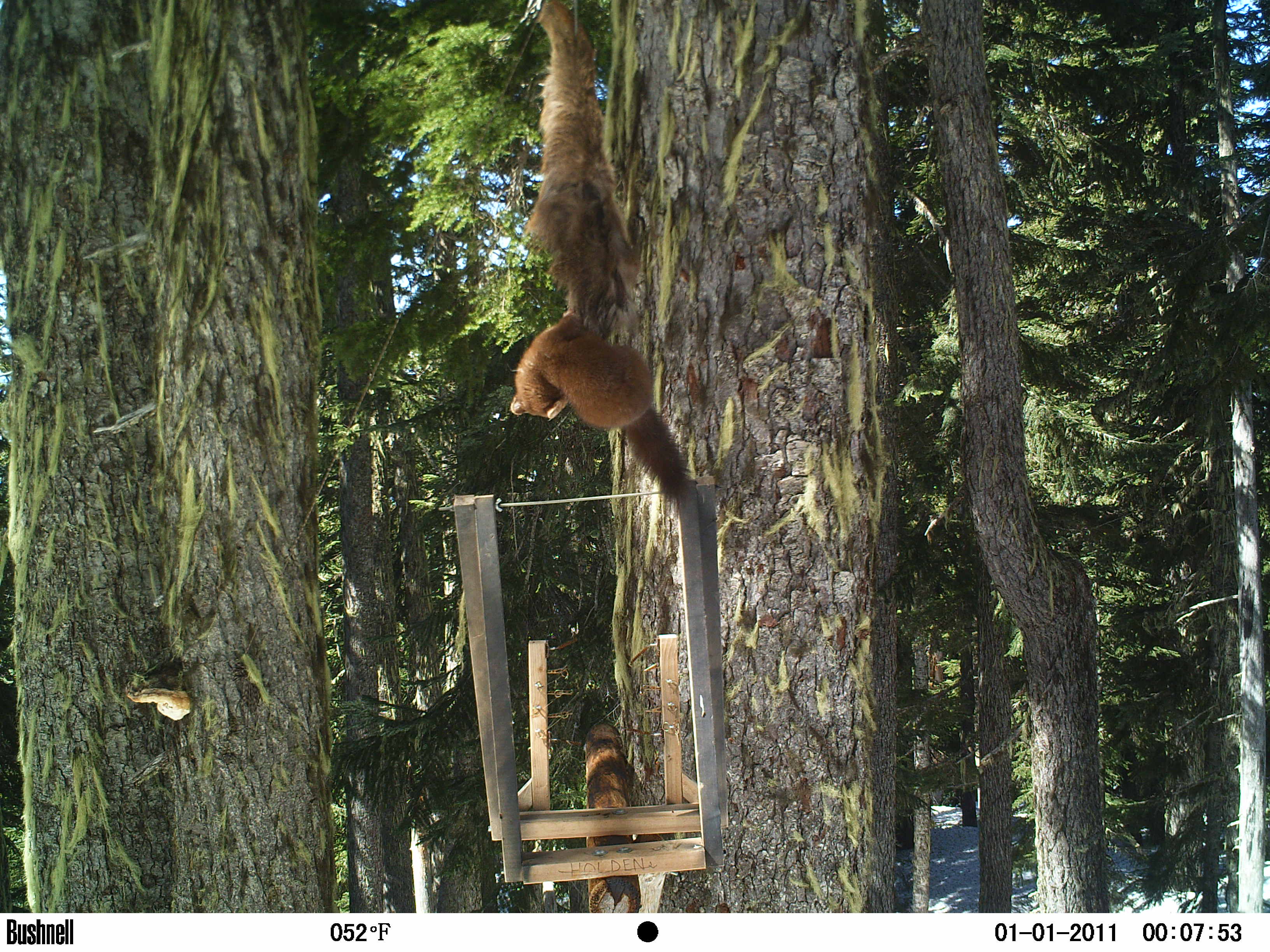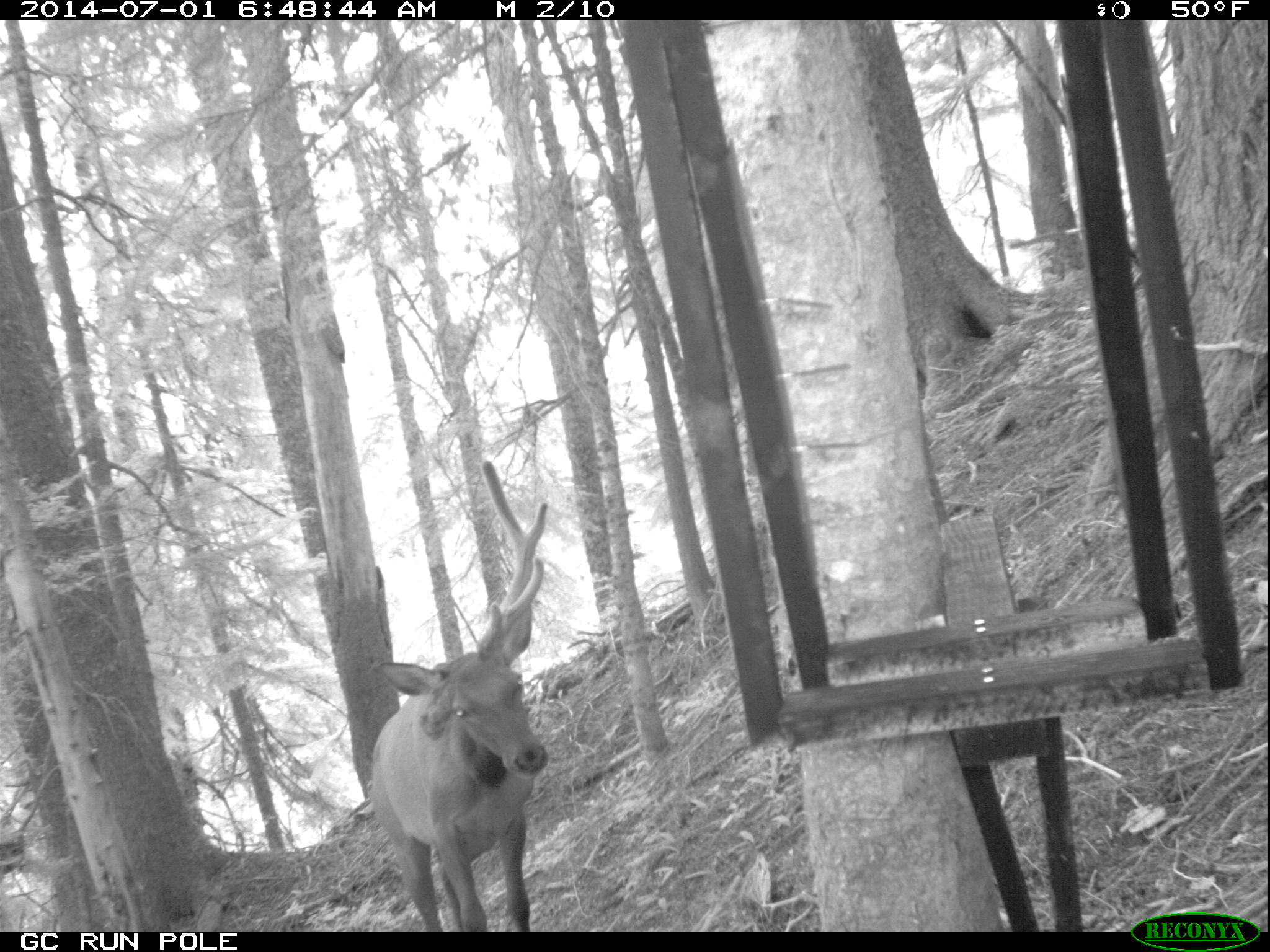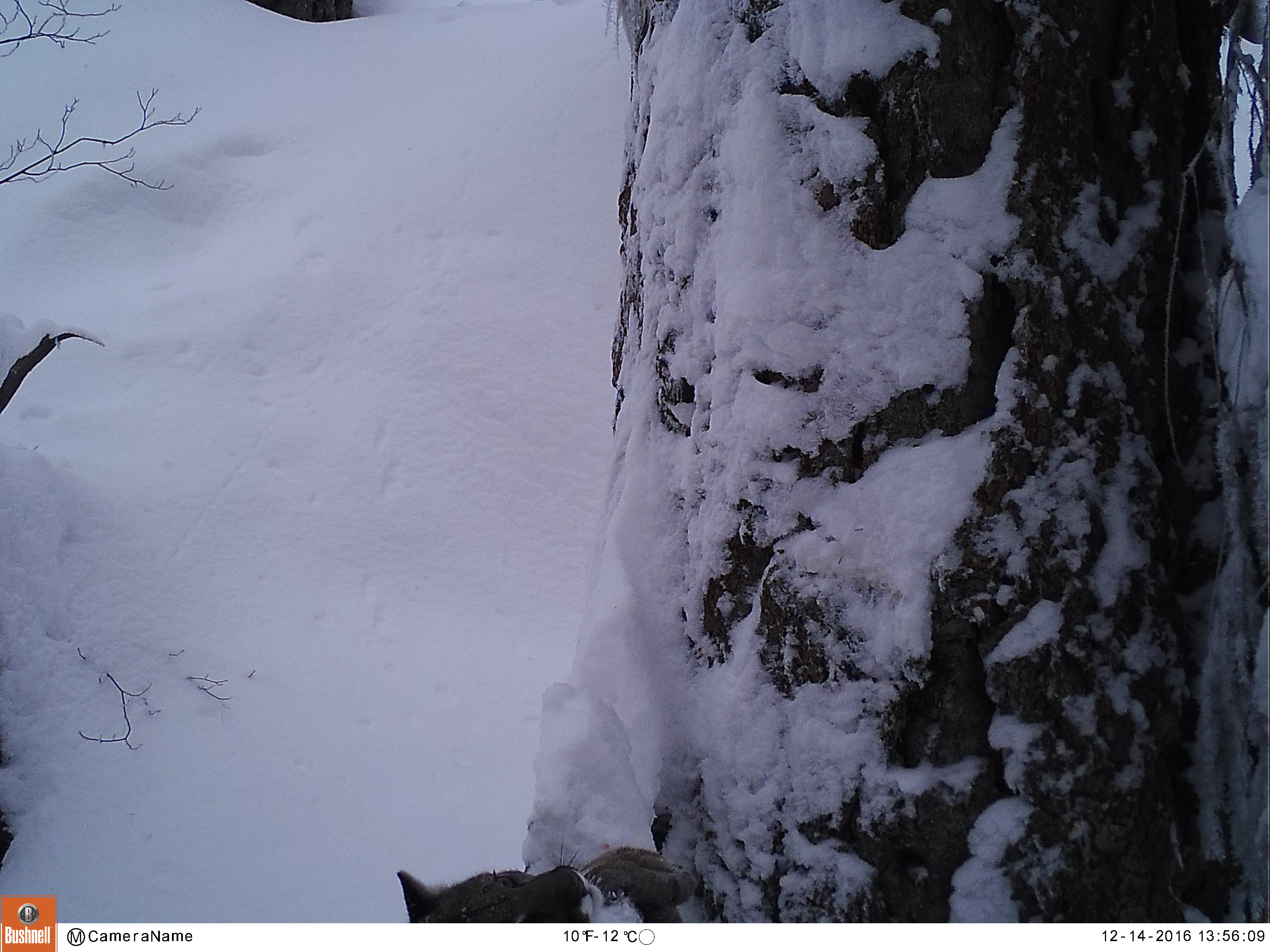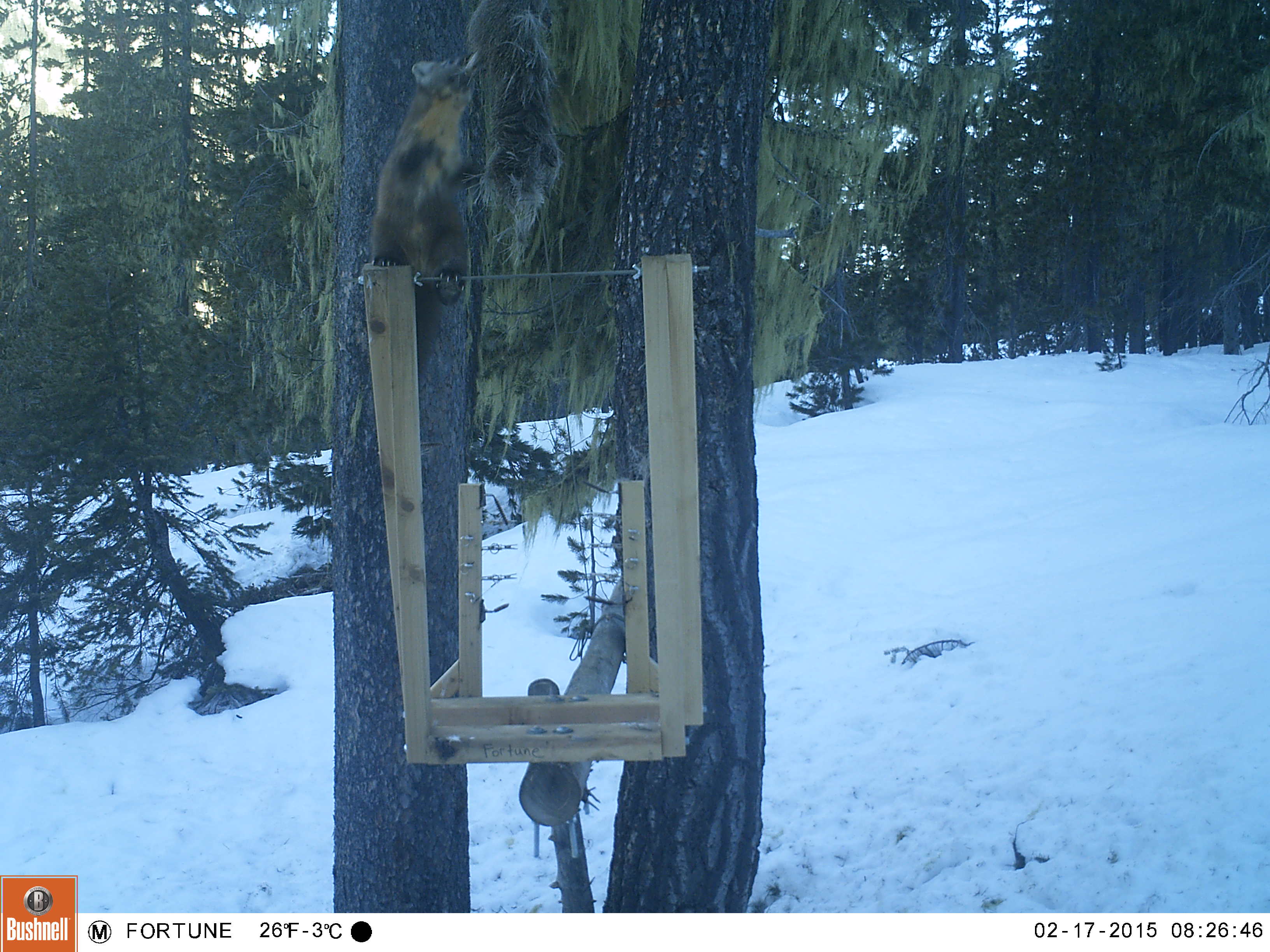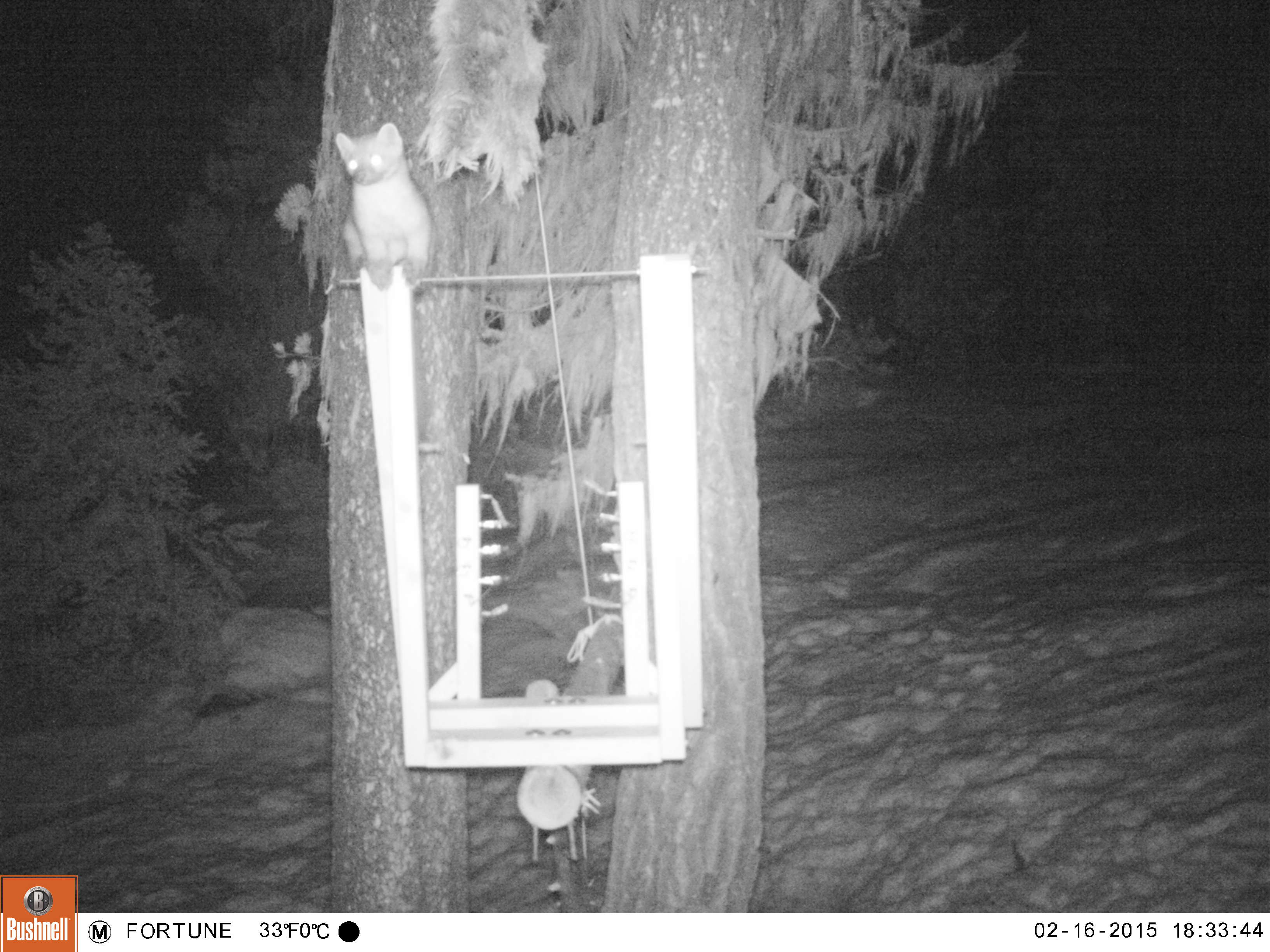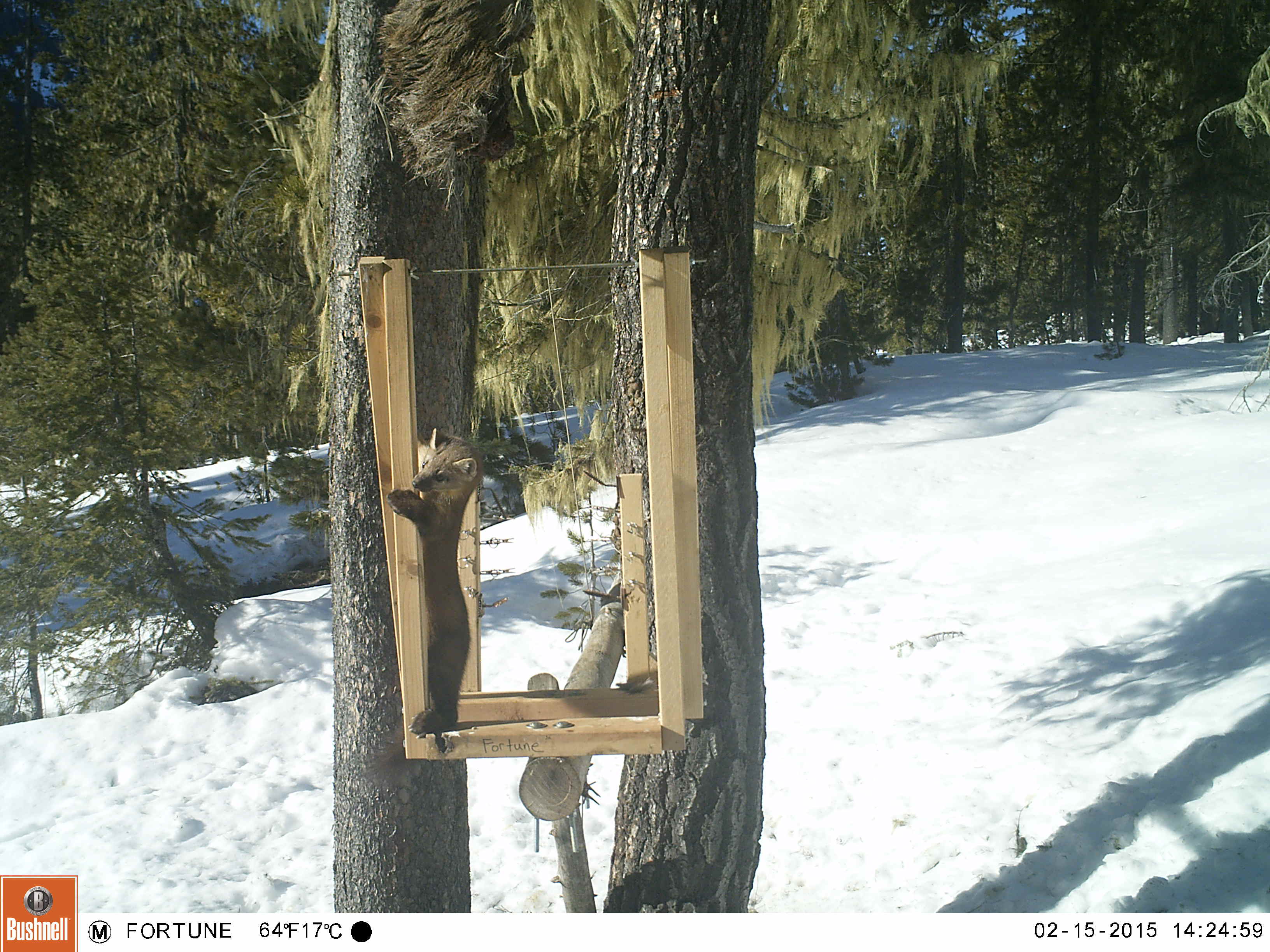Central Cascades Wolverine Study
The WSDOT Snoqualmie Pass East Project offers a unique opportunity to examine genetic connectivity before, during, and after a landscape fracture zone is removed. Wolverine is one of many species studied as part of this interstate highway expansion and mitigation project and was selected as an indicator species for montane carnivores.
The goals of this study are to document wolverine occupancy in the vicinity of the Snoqualmie Pass East Project and provide baseline data for genetic connectivity change post-project. A hexagon grid approximating a small female wolverine home range was overlaid on the late-season snow model described in Copeland et al. 2010. Hexagons containing large amounts of late-season snow with areas outside congressionally designated wilderness and containing groomed snowmobile routes were selected for study effort. Two stations per hexagon and equal effort north and south of I-90 given available habitat ratio is the goal. Methods described in Magoun et al. 2011 are used to collect genotype and phenotype information from individual wolverines.
Project Caveats: This data only provides occupancy, the density of stations is too low to determine density or absence.
The goals of this study are to document wolverine occupancy in the vicinity of the Snoqualmie Pass East Project and provide baseline data for genetic connectivity change post-project. A hexagon grid approximating a small female wolverine home range was overlaid on the late-season snow model described in Copeland et al. 2010. Hexagons containing large amounts of late-season snow with areas outside congressionally designated wilderness and containing groomed snowmobile routes were selected for study effort. Two stations per hexagon and equal effort north and south of I-90 given available habitat ratio is the goal. Methods described in Magoun et al. 2011 are used to collect genotype and phenotype information from individual wolverines.
Project Caveats: This data only provides occupancy, the density of stations is too low to determine density or absence.

